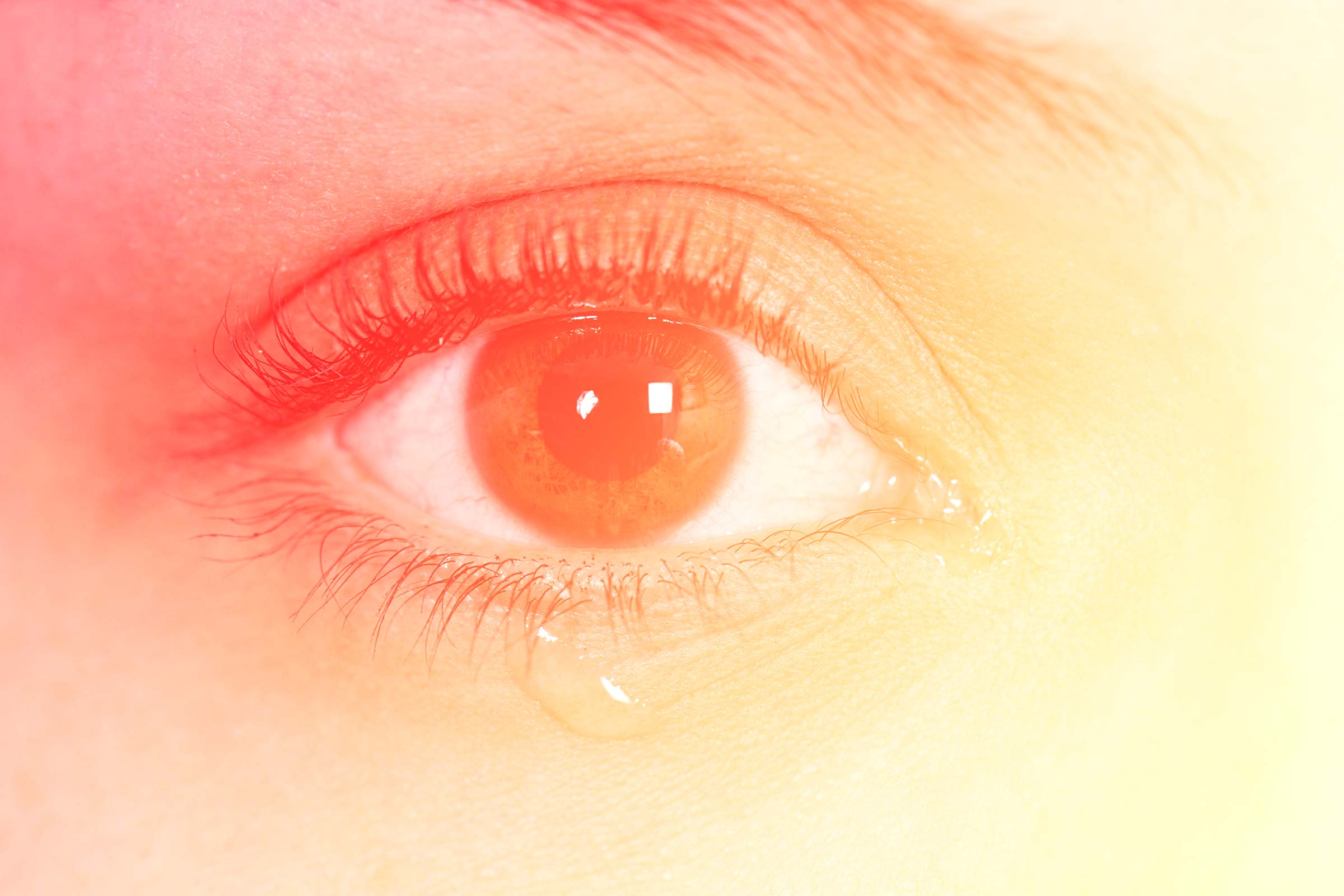A little discharge or crust around your eyes is normal, but a change in color, consistency, or amount could be a sign of something more serious. If any of the following eye booger traits sound familiar, talk to your doctor.
Your eyes are crusty

Waking up with a little something in your eyes is usually nothing to worry about, but if it seems extra crusty or feels irritated, you might have blepharitis, an inflammation of the eyelid that can result in crusting along the lid line. Or, you could have something much more common, like allergies. “During allergy season, your eyes might water more, and that sticks to the lid and crusts, or inflammation of the lid which can cause crustiness,” says Penny Asbell, MD, FACS, MBA, director of the Cornea Service and Refractive Surgery Center at the Icahn School of Medicine at Mount Sinai in New York City. Another condition, dry eye, can cause tear film to get thicker, leading to crust along the lid.
Your eye discharge isn’t clear

Yellow, green, or white eye mucus can signal an infection like conjunctivitis, commonly known as pink eye, especially if your eyes also itch or look red. There are two types of pink eye—bacterial and viral—and while both can be contagious, the viral form is especially easy to spread, even just by shaking hands. “With viral, you wake up with one eye red and irritated and in a day or two the other eye looks the same,” says Dr. Asbell. “The bacterial type is typically only in one eye.” A stye, often caused by an infected eyelash follicle, can also cause yellow pus and discomfort.
Your eyes are watery

Watery eyes can be from something as simple as allergies or a reaction to cold weather, but excessive tearing could also be a sign of dry eye. Believe it or not, dry eye can leave your eyes anything but—when your eyes don’t produce enough tears to properly lubricate, they get irritated, which triggers the lacrimal gland to release a large volume of tears.
Your eye boogers are thick and sticky

A blocked tear duct can prevent your tears from draining normally, resulting in a condition called dacryocystitis, which causes the eye to produce a thick and sticky discharge.
You have eye gunk while wearing contacts

“With contact lenses, the risk of serious infection is significantly higher,” says Dr. Asbell. If you notice discharge while wearing your lenses, sometimes accompanied by pain or change in vision, that’s a red flag that you might have an eye infection. “Be cautious; if you notice something, take them out and see a doctor, don’t just assume everything is OK,” she says. Bacterial and fungal keratitis are two infections of the cornea that can be caused by contact lens use; in addition to discharge, pain or sensitivity to light are other symptoms.
Your discharge makes it hard to see

If you have eye mucus so thick it’s impairing your vision, don’t delay in calling a doctor. Corneal ulcers are an abscess-like infection of the cornea that can result in discharge so thick you have trouble seeing. “Any change or loss of vision is cause for concern,” says Dr. Asbell. Here are secrets eye doctors won’t tell you about taking care of your peepers.
You have eye boogers all the time

If you have crud in your eyes no matter how many times you wipe them clean, it’s a good idea to see an ophthalmologist. “I think if someone gets chronic discharge every day, that’s a reason to see a doctor and look at what’s going on. That’s generally not normal,” says Dr. Asbell.
Your eyes feel glued shut

If it’s a struggle to peel your eyes open in the morning, something other than ordinary sleepiness might be to blame. Conjunctivitis, also known as pink eye, can sometimes cause it to feel like your eyes are stuck together.












